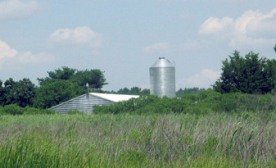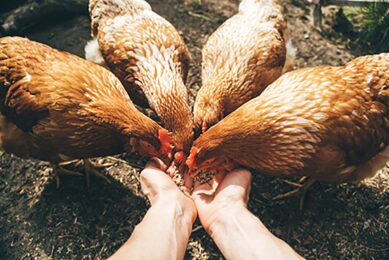Plants improve overall environment at farms

Recent studies at Penn State University have demonstrated that the use of vegetative buffers – single or multiple rows of shrubs and trees – can significantly reduce odours, dust and other factors impacting the immediate environment around poultry farms, according to the Poultry Science Association (PSA).
Dr. Paul Patterson, a professor at Penn State’s Dept. of Poultry Science, has been a leader in the effort to quantify the degree to which different types of vegetative buffers can help address a number of “nuisance” factors that are a natural part of the poultry grow-out process, while at the same time improving farm aesthetics.
“Investing in foliage and landscaping around poultry farms can pay multiple environmental dividends to growers,” said Patterson. “Certainly they can help beautify the landscape by providing a visual barrier for operations, so neighbours don’t have to be constantly exposed to routine activities like feed deliveries and the loading and unloading of birds. But at least equally important, vegetative buffers can also help address a number of issues relating to poultry farm operations that nearby residents, particularly those new to the rural areas where poultry farms tend to be located, sometimes complain about – and which some state legislatures have begun demanding that growers address.”
PSA President Dr. Sally Noll: “Prof. Patterson’s work has broken new ground in demonstrating the variety and effectiveness of vegetative buffers as tools to help meet some of the challenges now facing the poultry industry when producing poultry in more populated areas.”
Dust
In research at a Penn State hen farm, Patterson’s team measured a 67% reduction in total levels of particulate matter (PM) at a distance of 20 ft downwind from a 5-row vegetative buffer, with important differences in the types of plant species used. Particulate matter at 2.5 microns and 10 microns (PM2.5 and PM10, respectively) are EPA regulated emissions.
The team observed differences in the species of foliage used, with willow capturing more of the fine PM2.5 and less of the intermediate sized PM10 than juniper vegetation. Associated research showed that spruce and hybrid willow are effective traps for dust and its associated odours.
Odour
In Pennsylvania, in order to reduce the potential for community conflict, new and expanding poultry and livestock farms are required by the state to develop an odour management plan and submit to an odour site index. Scoring high values on the index require farmers to implement specific, and often costly, Best Management Practices (BMPs) specified by the state. According to PSA, studies by Patterson’s team have shown that appropriate use of vegetative buffers can help reduce odours and associated index scores.
In a September 2008 study, Patterson’s team measured a 46-54% reduction in odour levels as a result of the use of a vegetative buffer comprising 50 fir, juniper, willow, ornamental pear and birch trees, when compared to odours without trees present. The study used a pot-in-pot system that allowed placement and removal of the trees; the odour levels were determined using St. Croix Sensory’s AC’SENT® olfactormetry software.
Ammonia
According to PSA, Patterson has also demonstrated that vegetation can help trap ammonia emissions emanating from poultry houses. The amount of foliage needed to “scrub” emissions will depend on the size and type of facilities. The vegetation used by Patterson in his ammonia studies included Honey locust, Hybrid poplar vegetation, Reed canary grass, and Norway spruce.
Patterson has also shown that vegetative buffers can be effective in reducing Infectious Bronchitis (IBV) transmission, via wind, between birds on the same or different farms.
Other advantages
“In addition to improving farm aesthetics and lowering dust, odour and ammonia levels, shrubs and trees can also help hold down energy costs,” noted Patterson. “Strategically placed, these buffers can act as snow fences, dropping snow in front of the buildings instead of on the roof or around access roads, feed bins, or fans. Other vegetation can be planted to shade the radiant load of summer sun on the buildings to cool the air entering the inlets or curtains. So investment in appropriately selected and sited vegetation around poultry farms really can yield a surprising number of benefits.”
Patterson’s work was funded by grants from the USDA National Resources Conservation Service and the Pennsylvania Department of Agriculture.












